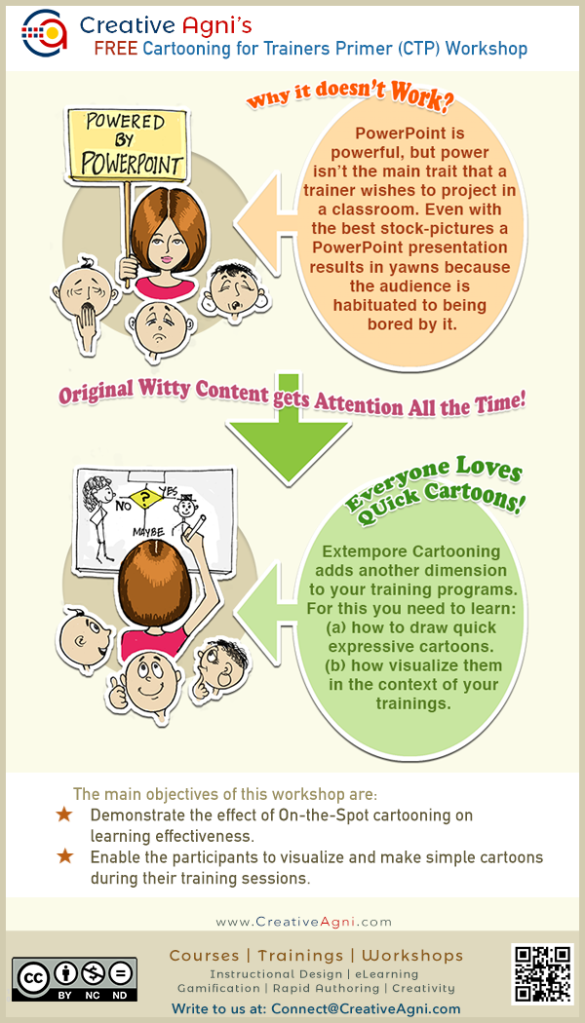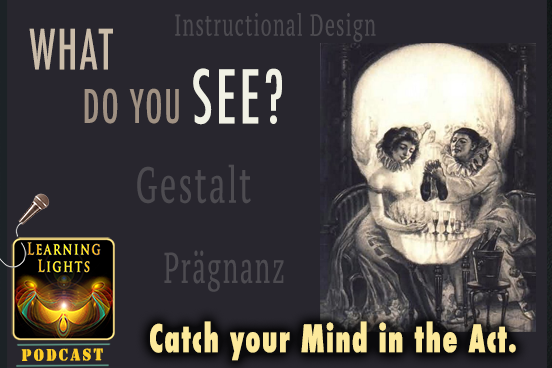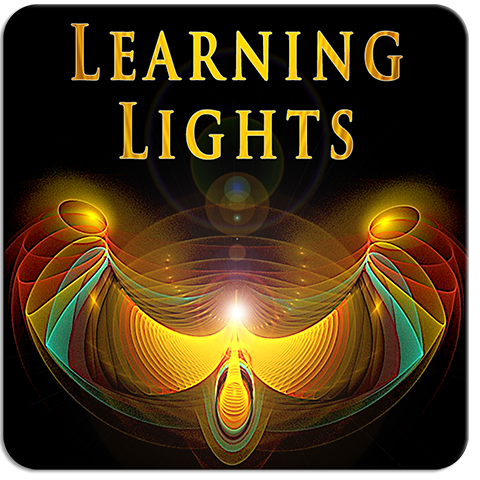Last week, I received a call from a young woman who was interested in exploring the IDCD (Instructional Design and Content Development) course. During our discussion, she asked me if her lack of creativity would in any manner hamper her performance in the course. It is a question that I’ve fielded many times in the last fourteen years, and fortunately, I’ve done it with a conviction that comes from a long experience with creativity.
I’ve been creative in at least three different areas, and all these areas, I’ve been sufficiently creative to be considered a professional. These three areas are art, fiction-writing, and training/elearning content development. My experience tells me that when I’m being madly creative in one area, I’m only marginally creative in the other two. Why? Because creativity begins by submerging yourself in a context.
Igniting, Harnessing, and Channeling your Creative Potential – An Example
Here’s a recent example. We’ve been thinking of bringing you the REDAC (Rapid eLearning Development with Adobe Captivate) course for a while now. So when in January end, I applied myself to designing this program, I had to break away from a historical fiction piece that I was writing. You could say that I could spend a few hours on my fiction writing endeavor and the remaining on designing the REDAC course. Unfortunately, this sort of multitasking becomes very difficult when you are trying to divide your time between two very different types of creative endeavors. (If your day job is that of a banker, an accountant or a shop floor engineer who works on job-scheduling, then you can be a creative writer in the evenings – because there isn’t a creative clash.)
You see,
Thus, in order to ignite, harness, and channel creativity, one must follow a method. Almost all those who are highly (and repetitively creative) follow one. It is usually a method that they develop themselves, but once they have developed it, they stick to it. Dan Brown is an excellent example of this phenomenon. I’ve been an ardent follower of his Facebook page and a relentless reader of his books, and I’ve noticed that he has a method. He approaches every book as a creative project and at the beginning of this project, he immerses himself into the context (information on what he wants to write about.) He reads, researches, watches videos, meets people, travels, visits places he thinks he’d like to situate his story in…but of course, this is just the beginning. Creativity isn’t only about coming up with ideas – there’s a lot more to it, including retaining the best ideas and sustaining the creative energy that will eventually turn your ideas into effective creative expressions.
I see this element in my own creative method too. I’ve talked about it at length in my new book, which is just a few months away from reaching your favorite book-store 🙂
“Our mind is a treasure chest of slumbering creative nodes that just need to be woken up in the right environment to let our creativity flow.” – SRA.





